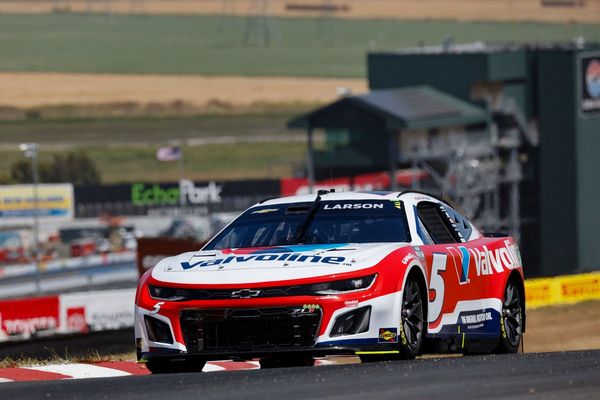We all get old. It's just a fact of life.
But for those of us who've put our bodies through hell chasing our powersport passions, it can be tough getting older. Not just because we can't do the same things we used to and still want to enjoy, but because the physical toll we've subjected our bodies to can be debilitating.
Broken bones, compressed spines, countless stitches, and concussions can leave you in pain, in bed, unable to do basic tasks, or worse. Buy me a coffee one day and I'll tell you how much my spine still hurts after my big motorcycle crash.
But no one has subjected their body to as much suffering through the years as legendary action sports icon, and a superbly chill dude in person, Travis Pastrana. Recently, through a post on his Instagram, he stated why he had to exit the American Rally Championship, as he just couldn't compete thanks to his years of injuries.
Now, in the latest video of Pastrana's Channel 199 YouTube channel, the athlete is opening up about how he aims to recover to feel better and be a dad to his young girls. And that includes trying non-traditional medicines, along with cutting-edge stem cell therapies.
"Do I regret a second of it?" Pastrana says, adding, "Absolutely not."
"But my body's always in pain. And...it sucks not being able to play with my kids, jump on the trampoline, ride bicycles or the pump track with my wife," Pastrana says as he opens the video. He adds, "I finally got to the point where I said, 'You know what, I'm going to take some time and I've got to get my body healthy.'"
Travis then points out that it was his oldest daughter's words that, in combination of Jay Archer, Ken Block and Ron Meridith's passings, made him finally stop. "When my oldest daughter Addy was crying and she said, 'Dad, just don't go. Could you just not leave.'" And just after, at Rally 100 Acre Woods, Travis experienced a near-miss that made him feel, "Was this all worth it?"
And it's here where a few of Travis' friends, including Mike Escamilla, Cowboy Cerrone, and Andy Bell start to go into how they're working on getting to a place where their years of injuries and constant pain aren't daily occurrences, including going through stem-cell therapy both here in the United States (where it's a controversial issue), as well as down in South America.
Can-Am's Terry Madden, who's faced similar injuries and is a friend of Travis, is currently in South America for stem cell therapy, too.
Now, here's where I have to say that there's real scientific benefit of stem cell therapy, as the highly respected Mayo Clinic points out, "Stem cells can be guided into becoming specific cells that can be used in people to regenerate and repair tissues that have been damaged or affected by disease. People who might benefit from stem cell therapies include those with leukemia, Hodgkin disease, non-Hodgkin lymphoma and some solid tumor cancers."
The Clinic adds, "Stem cell therapies also might benefit people who have aplastic anemia, immunodeficiencies and inherited conditions of metabolism. Stem cells are being studied to treat type 1 diabetes, Parkinson's disease, amyotrophic lateral sclerosis, heart failure, osteoarthritis and other conditions. Stem cells may have the potential to be grown to become new tissue for use in transplant and regenerative medicine. Researchers continue to advance the knowledge on stem cells and their applications in transplant and regenerative medicine."
But, thanks to one particular method of obtaining stem cells, and as alluded to earlier, they're controversial (to say the least) in the United States.
Once again from The Mayo Clinic, "Embryonic stem cells are taken from early-stage embryos — a group of cells that forms when eggs are fertilized with sperm at an in vitro fertilization clinic. Because human embryonic stem cells are taken from human embryos, several questions have been raised about the ethics of embryonic stem cell research," adding, "The National Institutes of Health created guidelines for human stem cell research in 2009. The guidelines define embryonic stem cells and how they may be used in research and include recommendations for the donation of embryonic stem cells. Also, the guidelines state that embryonic stem cells from embryos created by in vitro fertilization can be used only when the embryo is no longer needed."
That said, the public discourse on stem cell retrieval has diminished in recent years, as demographics shift.
There's a whole lot more to stem cells, and The Mayo Clinic's site is a helluva resource if you want to know more about the potential benefits, controversies, and more. Maybe this will bring more eyes to the topic as, again, they have real potential to help a lot of people.
Here's hoping it helps Travis and others.







